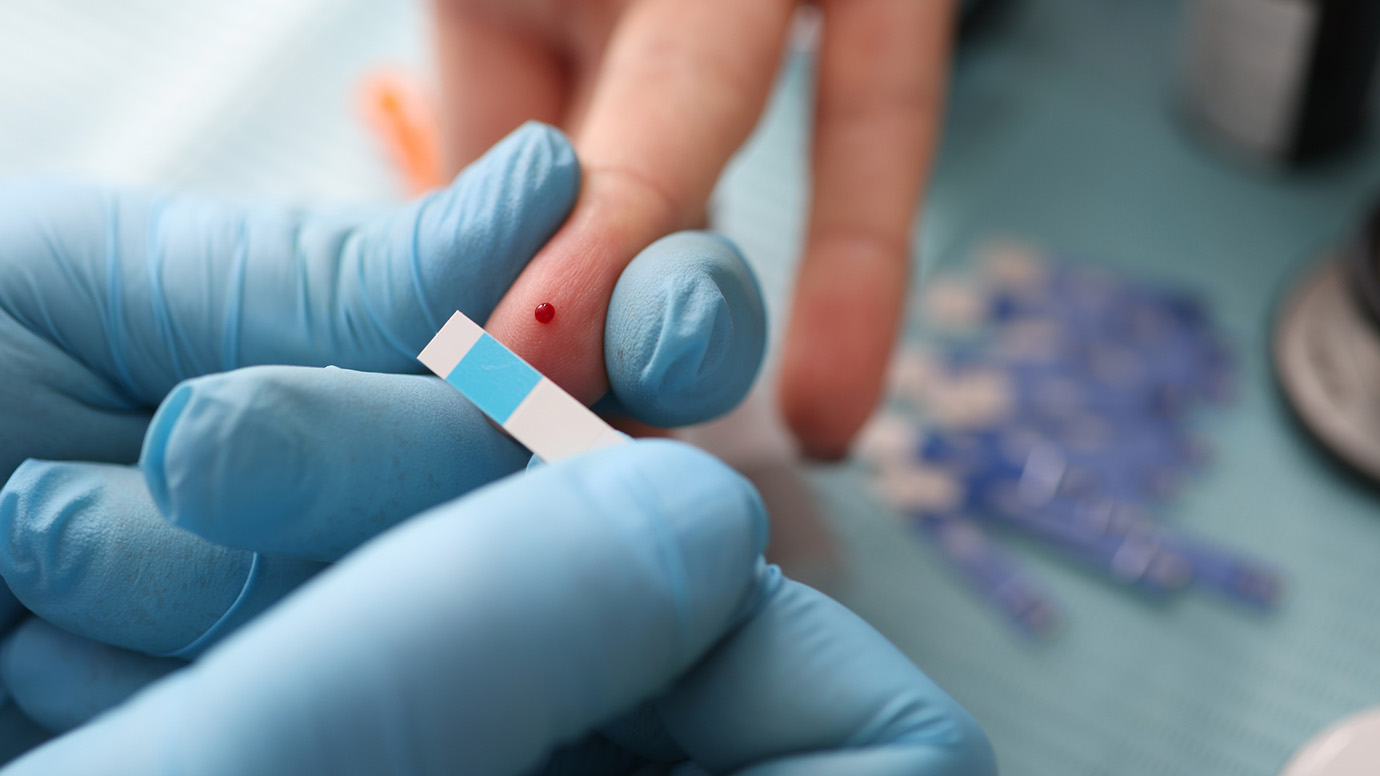Researchers Talk: Past, Present and Future of Pancreas Transplants
Written by: Julia Flaherty
6 minute read
June 8, 2022
Are pancreas transplants the way of the future for people with diabetes? Here’s what you should know about the procedure.
Coverage of the American Diabetes Association (ADA) Scientific Sessions is brought to you by the ADA x BT1 Collab.
Speakers for this session, “Current Outcomes of Pancreas Transplantation in the United States,” included: Umesh Masharani, MB, BS (University of California, San Francisco), Carrie Thiessen, MD, Ph.D. (University of Wisconsin–Madison), Kenneth Brayman, MD, Ph.D. (University of Virginia) and Raja Kandaswamy, MD (University of Minnesota).
In this article, we focus on the research presented by Kandaswamy.
Here’s what you should know about the past, present and future of pancreas transplants in the United States, according to research presented by Dr. Raja Kandaswamy from the University of Minnesota.
The history of pancreas transplants
-
- Why beta cell replacement therapy? The goal of beta cell replacement therapy is to improve quality of life through stable blood glucose without relying on insulin and preventing complications of diabetes.
- What is “diabetes mellitus”? Kandaswamy established that it is “a disease of an absolute or relative deficiency of insulin production, relative to insulin needs, whether type 1 or 2.” This should be what we think of when we hear “diabetes” in general terms, encompassing all forms of diabetes that rely on insulin to any degree.
- Why pancreas transplantation? Pancreas transplantation is an “islet transplant.” (Islets are a group of cells in your pancreas.)
“These are the fundamental concepts that drive diabetes in the surgical arena,” Kandaswamy said, setting the foundation for the rest of his presentation.
There are two current beta cell replacement therapies for the treatment of insulin-dependent diabetes, pancreas transplants— which are “efficient, but require major surgery,” Kandaswamy explained, and islet isolation and transplantation—which are “minimally invasive, but inefficient.”
The evolution of pancreas transplants
The history of pancreas transplants can be traced back to the late 1800s, with the earliest known report published in the British Medical Journal. “Dr. P Watson transplanted pieces of sheep pancreas into a young boy who was dying of ketoacidosis in 1894 at the Bristol Royal Infirmary,” Kandaswamy said.
Dogs received the first “(of a tissue or structure) provided with vessels, especially blood vessels; made vascular.” (Oxford Dictionary)vascularized pancreas transplants from French surgeons in the 1920s and 30s. From the late 50s to the early 70s, numerous research groups attempted pancreas transplants in dogs.
Kandaswamy referred to December 16, 1966, as the true “modern era” of clinical pancreas transplants when Dr. William Kelly and Dr. Lillehei of the University of Minnesota performed the first pancreas transplant in a person with diabetes.
Current trends in pancreas transplants
United States: From 1978 forward, pancreas transplants took off in the United States, peaking around 2006, then slightly tapering within the last decade and stabilizing in the past couple of years. Today, around 1,000 pancreas transplants are performed in the United States per year.
Worldwide/Outside of the U.S.: Globally, it took pancreas transplants longer to take off, but unlike in the U.S., they did not taper. Since 2011, the rate of procedures has remained steady. From 2011 to 2018, between 1,200 to 1,400 pancreas transplants were performed per year across the globe.
There are several categories of pancreas transplants, including: simultaneous kidney and pancreas (SPK) transplants (accounting for 80 percent of all transplant cases in the U.S.), pancreas after kidney (PAK) transplant and pancreas transplant alone (PTA).
A physician considers several factors when deciding which type of transplant is suitable for a patient, including the availability of organs or a person’s unique diabetes profile (type, management, control, complications, etc.).
Highlights: pancreas transplant data
Other vital data that Kandaswamy shared includes:
Today, the average recipient of a pancreas transplant in the U.S. is 50 years old, which is 20 years older than the typical patient 40 years ago. Kandaswamy attributed this to increased risk tolerance and an increased number of people with type 2 diabetes receiving transplants.
- From 1984 to 2021, the short-term survival rate of pancreas transplant recipients increased from slightly under 80 percent to 98 percent today. Kandaswamy said, “under 80 percent would not be acceptable today.”
- The ten-year pancreas transplant survival rate is almost 75 to 80 percent. Kandaswamy noted these were all remarkable statistics, especially considering the severe complications most recipients faced.
- People with diabetes put on the pancreas transplant waitlist in the U.S. showed 46 percent mortality over four years, compared to SPK transplant recipients who had a 90 percent chance of survival over the same four-year period.
- In three years, the function of the pancreas was very similar in patients with type 1 and type 2 diabetes who received a transplant (91.2 percent in type 1 patients versus 91.5 percent in type 2 patients).
This touches the surface of the research Kandaswamy shared. If you would like to dive deeper into the details of his research, click here.
Do pancreas transplants have an access problem?
Today, there is a lot of interest in transplants for patients with type 2 diabetes. In the past 10 to 15 years, the number of patients with type 2 diabetes who received pancreas transplants tripled. Kandaswamy said people with type 2 diabetes account for 8 to 9 percent of all pancreas transplants.
Transplant recipients with type 1 diabetes are overwhelmingly white (55 percent), and the majority of recipients with type 2 diabetes are Black (43 percent), highlighting problems with access to comprehensive diabetes care and barriers to insulin independence for minorities.
The one-year survival of patients with type 2 diabetes who received a pancreas transplant was 97.2 percent.
The future of pancreas transplants
Kandaswamy concluded SPK transplants “are associated with long-term results and should be offered to all “Uremia is a buildup of toxins in your blood. It occurs when the kidneys stop filtering toxins out through your urine.” (Cleveland Clinic)uremic insulin-dependent diabetics who qualify for a kidney transplant.”
While PTA transplants “should be selectively offered to people with diabetes with severe hypoglycemic episodes or progressive secondary complications in spite of optimal/available medical management.”
He furthered that pancreas transplants are “an established modality for achieving insulin independence” in patients with insulin-dependent diabetes mellitus (IDDM).
While pancreas transplants have come a long way in terms of having more procedure options and high survival rates, the procedure is still not popular for people with type 1 and type 2 diabetes. Pancreas transplants are not a cure for diabetes–they are a helpful life-saving last resort for those who have tried everything else. Different groups of patients also appear to have less access to the procedure than others.

Author
Julia Flaherty
Julia Flaherty has lived with type 1 diabetes since 2004. She is passionate about empowering others navigating chronic illness and promoting healing through creativity. Julia is a content marketing specialist, writer, and editor with health and wellness coaching certification. She is also the founder of Chronically You, which provides wellness coaching and marketing services. Julia has created hundreds of blogs, articles, eBooks, social media campaigns, and white papers since starting her career in 2015. She is also the author and illustrator of "Rosie Becomes a Warrior," a children's book series in English and Spanish that empowers children with T1D. Julia... Read more
Related Resources

Forget everything you think you know about diabetes. Depending on where you learned it, there’s...
Read more

During the week of October 14, 2025, California became the 29th U.S. state to pass...
Read more

Starting in January 2026, Civica Rx, a nonprofit drug manufacturing company, will launch its affordable...
Read more

